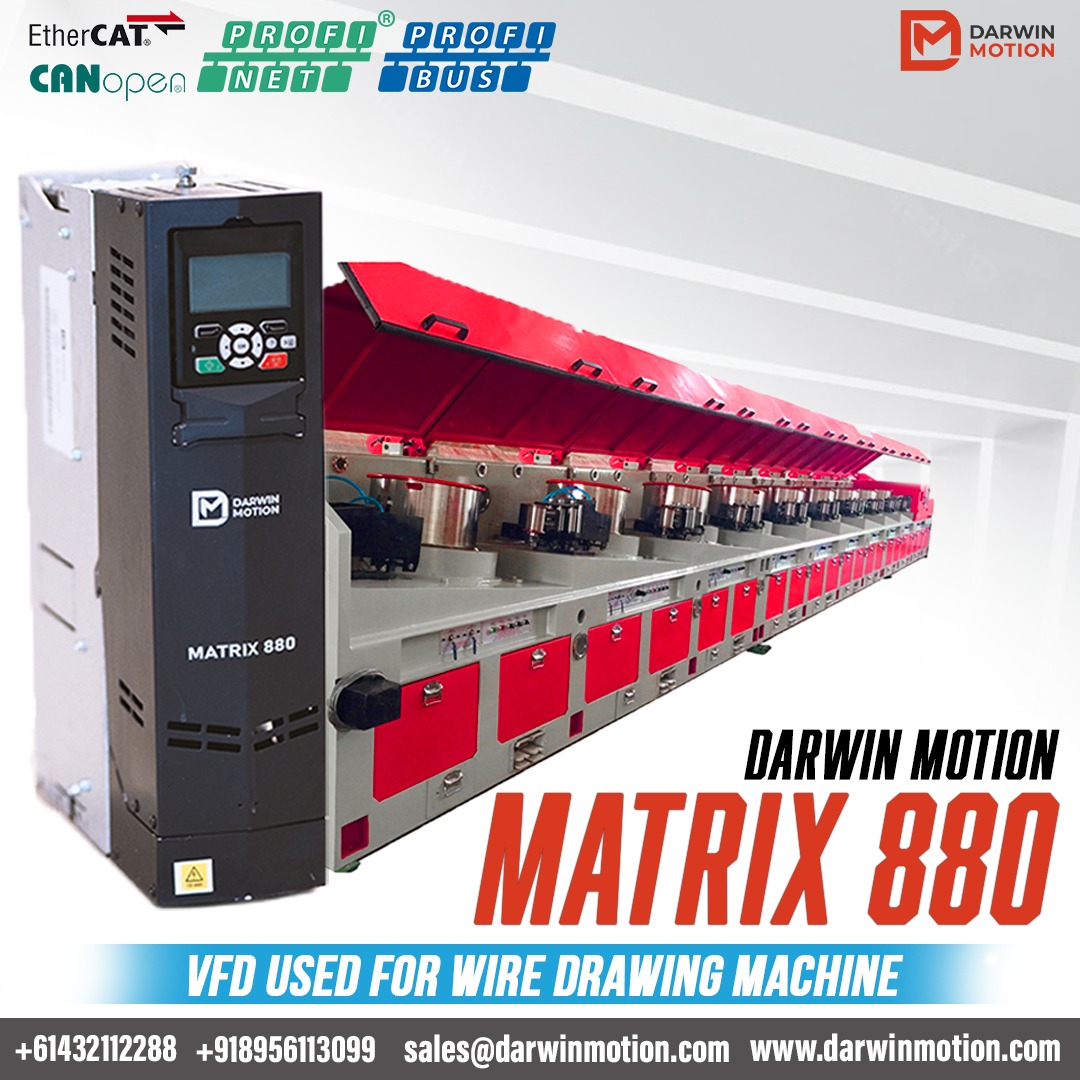Posted on 14th Mar 2024

In the realm of industrial machinery, optimizing energy usage is paramount. One technology that has revolutionized efficiency in various applications is Darwin Motion Variable Frequency Drives (VFDs).
These sophisticated electronic devices control the speed of AC motors by adjusting the frequency and voltage of the power supplied to the motor. However, what often goes unnoticed is the potential for VFDs to regenerate power, significantly enhancing energy efficiency and cost savings.
Traditional motor control methods, such as mechanical throttling or using fixed-speed motors, are notorious for wasting energy. VFDs, on the other hand, offer precise speed control, allowing motors to operate at the optimal speed for the task at hand. This alone results in considerable energy savings by eliminating unnecessary energy consumption during low-load conditions (regenerative drive elevator).
What sets VFDs apart even further is their capability for regenerative power. When a motor connected to a VFD slows down or stops, it acts as a generator, producing electricity. Instead of dissipating this energy as heat or wasting it, VFDs can feed it back into the power supply system. This process, known as regenerative braking, not only conserves energy but also reduces stress on the motor and associated machinery.
The applications of VFD regenerative power are diverse and widespread across various industries:
Elevators and Escalators: In vertical transportation systems, VFDs control the speed of motors powering elevators and escalators. During descent or deceleration, the motors generate electricity, which can be returned to the grid or used to power other building systems, thus reducing overall energy consumption.
Industrial Machinery: Manufacturing processes often involve equipment with fluctuating loads. VFDs efficiently manage motor speed based on demand, and during braking or deceleration phases, they harness regenerative power to offset energy costs.
Renewable Energy Integration: VFDs play a crucial role in renewable energy systems, such as wind turbines and solar tracking systems. By controlling the speed of generators, they optimize energy output and capture excess energy during braking or wind gusts, enhancing overall system efficiency.
Electric Vehicles (EVs): Regenerative braking is a well-known feature in electric and hybrid vehicles. VFDs manage the power flow between the vehicle's motor and battery, recovering kinetic energy during braking and converting it into electrical energy to recharge the battery, thus extending driving range.
Cost Savings: By reducing energy consumption and minimizing wear and tear on equipment, businesses can experience significant cost savings over time, offsetting the initial investment in VFD technology.
Environmental Impact: Lower energy consumption translates to reduced greenhouse gas emissions and a smaller ecological footprint, aligning with sustainability goals and regulatory requirements.
Improved Performance and Reliability: VFDs offer precise control over motor speed, resulting in smoother operation, reduced mechanical stress, and longer equipment lifespan.
While the advantages of VFD regenerative power are clear, implementation does come with some considerations:
Initial Cost: The upfront cost of VFDs and associated control systems may deter some businesses from adopting this technology. However, the long-term energy savings and performance improvements often justify the investment.
System Compatibility: Integrating VFDs into existing systems may require modifications or upgrades to ensure compatibility and optimal performance.
Maintenance and Support: Proper maintenance and periodic inspections are essential to ensure the continued efficiency and reliability of VFDs. Additionally, training staff on VFD operation and troubleshooting is crucial for maximizing benefits.
Regenerative VFD represent a paradigm shift in motor control technology, offering unparalleled efficiency and versatility. By harnessing regenerative power, VFDs not only optimize energy usage but also contribute to a more sustainable and cost-effective future. As industries strive to minimize their environmental impact and enhance operational efficiency, embracing VFD technology and its regenerative capabilities will undoubtedly play a pivotal role in achieving these goals.